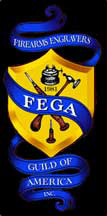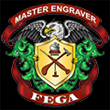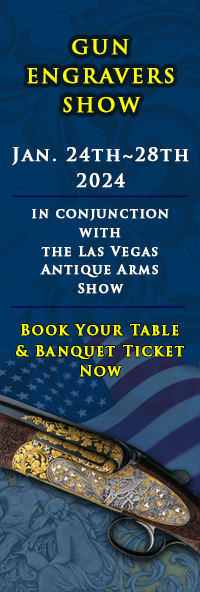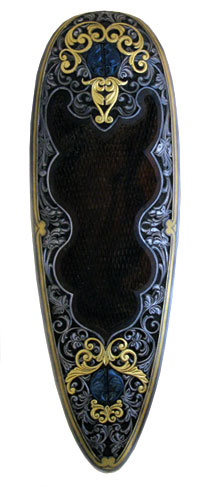
- Home
- About
- Membership
- The Engravers
- Convention
- Awards
- Auction Gun
- Magazine
- Shop
- Links
- Your Account
- Connect W FB
- Members Only
- Login
- Logout
- Contact

| Rust Pockets |
I am having a problem with a gun I am engraving. It is an old Egnlish side by side, a Fred Willaims 12ga. The owner wants it to be cleaned up and restore the original engraving. I am finding rust pockets in the metal. I want to try and dill a hole a bit (.010) smaller than a piece of dowl, heat up the metal to expand the hole and carefully tap in the dowl, then aneal and engrave. I am not sure if this is the best way to solve the problem or not plus there are several pockets of rust. I have the piece polished to a very nice lusture, I layed out the parts to engrave and, "click" rust, re-sharpen, "click" rust, re-sharpen, well I was wondering if anone had an idea. Thanks,
|
Tad, if I am understanding your problem, this should work very well for you.
|
John, thanks for responding. I have not thought of that and I will give it a try. Some of the pockets are bbigger than .025, however, I will indeed practice your tip and see if it can be utilized on the smaller pockets. Some of the pockets are very shallow and I feel the inlay tip might work. Some of the pockets are .125 and rather deeep. My consern as I told the individual commisioning the work is, the saftey of the gun. He wants to use the gun at his upscale gun club. I don't want a piece of metal in a criticail area to come out. Even though the gun will more than likely not be affected, it does not set right with me doing a job and not being as close to sure that the gun will be safe as well as looking great. I am over two thirds done and he got all excited on a visit to see the progress. he was happy that it look as it does. We went over the rust issue and he told me to do what I think is right and to him the gun looked great. I can not live with my self if someone was hurt from a defect I knew was in the firearm. Even a rust pocket. Thanks again John.
|
Ok, I guess most of the membership has little experience with pockets of rust in older firearms. I thought The "Guild" would have at least several tips. So I will ask if anyone knows of a blacksmith maybe that can address this problem. I have a customer that whats his firearm back looking good. I want it to be looking good also, but safe to shoot. If there are other organizations that could help, please let me know it they are out there. I guess if I get no response thay wil be an improtant message also. Resdpectfully, Tad
|
Tad, glad to be of help. For bigger/ deeper areas, you can use a section of bailing wire. If that's too big split it down the length and anneal the end while still attached to the roll.
|
Tad, three things I forgot to mention. I'm sure you know these, but just in case.
|
Thank you John;
|
Tad, I just returned from a trip and saw your question. I have used the soft iron inlay many times to fill rust pits and haven't had any problem with them. Some were a good bit larger than .025 inch. I found that when there is a lot of pitting and some overlap, turning them into a short cut line and then inlaying that worked well. Be aware that if the part is going to be hot dip blued that you may get a slight difference in color and under some lighting conditions the spots can be seen, at least when you are looking for them. Rust bluing does not seem to have this problem. Nor does plating. Be sure you anneal the iron and clean it before inlaying and try to set it with the first hit because it will work harden quickly and will be difficult to set with the second hit. I have done guns that required some 80 or so inlays to remove the major pitting. If you have any more questions I will be online usually once a day.
|
I have found in many cases these pockets are actually slag included in the metal from when the " crucible steel " these old english guns were made from was formed.
|
Tad,
|
| Respond |
Site Copyright 2012 by FEGA
Terms of Use



